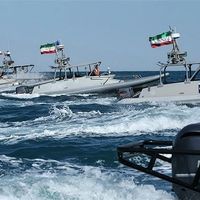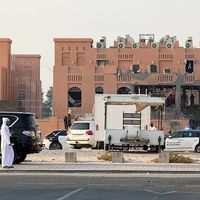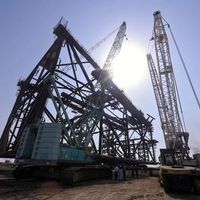Mojtaba is widely seen as the frontrunner to succeed his 85-year old father. The premise of, and the main theme running through, most such posts is that Raisi could have been a contender in the unofficial, unspoken race to become the next ruler of the Islamic Republic, and therefore had to be ‘removed.’
The word ‘removed’ (or ‘erased’) is, in fact, quite telling, as it suggests a human intention and action instead of an accidental air crash.
There is, of course, no conclusive evidence—nor even much circumstantial evidence, so soon after the incident—to prove the assertion that Raisi’s death wasn’t an accident or that Mojtaba had any involvement. But evidence is the purview of courts of law; it is an integral part of due process. Neither exists in Iran today, nor does public trust in the state and its institutions. What does exist in abundance, however, are rumors, hearsay, and conspiracy theories.
“In Iran's conspiratorial political culture few will believe Raisi’s death was accidental,” Karim Sadjadpour of Carnegie Endowment for Peace posted on X Sunday night, hours before it Raisi’s death was confirmed.
And there was no need to wait, as far as ordinary Iranians are concerned. There was no need, no point, in waiting for official announcements, because “they never tell the truth anyway,” according to Amirhossein, a 35-year electrician turned activist after losing a close relative when the IRGC shot down a Ukrainian aircraft minutes after it took off from Tehran’s international airport.
“They lied then, they lie now. They’re actually incapable of telling the truth,” Amirhossein added. “Many hours after [Raisi’s] death was confirmed, they published pictures of the crash scene that were found out to be from another crash a few years back. Why would you do that if you didn’t think that real photos of the crash site could contain clues that would help experts establish this wasn’t an accident?”
This has indeed been a recurring question by many Iranians on social media: why publish photos of another accident if you have nothing to hide?
Not everybody is that serious, of course. Many Iranians' preferred reaction is to ‘mock and walk’, not attaching enough value to official statements to try and disprove or discredit them. The regime, as far as these Iranians are concerned, has been completely found out. Suffice it to remind the crowd of what they all know, have a laugh, and move on.
As far as the Iranian regime is concerned, the jokes are perhaps hardest to suppress –and perhaps most impactful. They spread around like wildfire and reduce the officials, from the Supreme Leader down to local apparatchiks, to burnt sticks, devoid of all authority –and clothes.









